Table of Contents
The definition of software is rapidly evolving away from on-premises to the cloud. And like all forms of digital transformation, Software Asset Management (SAM) teams – and their tools – need to adapt or risk being left behind.
After years of exponential growth, Software-as-a-Service (SaaS) now accounts for most software purchases. In 2023, 60% of software spending was on SaaS, up 10% from 2022 (IDC 2023 Q4 State of the Market Report).
Today, a staggering 93% of IT and Software Asset Management (SAM) professionals consider SaaS use and spend as part of their overall cloud optimization initiatives. But nearly half report minimal to no measurable results — and some aren’t even tracking their SaaS apps!
To stay relevant in today’s market, SAM teams need to look to the future. And the future is SaaS. Doing so helps organizations evolve the tools they use to get the job done and adds a layer of job security. We fully believe the role of SaaS Manager will soon become one of the most in-demand positions in enterprise tech.
How SaaS Differs from On-Premises Software
For decades, the enterprise software lifecycle fell solely under IT control. They sourced and purchased software, vetted security compliance, and managed on-premises deployment before passing license management to their SAM teams.
Then, in the early 2000s, software purchasing shifted away from IT. Soon, department heads became the principal buyers of specialized software, serving functions like marketing, HR, design, and finance.
More recently, we’ve seen a shift to the end-user model. Apps are now banking on low-cost licenses and freemium subscriptions to attract new customers. This shift flipped the buying power from IT to individual users, meaning any employee with a credit card can bring new software into the organization.
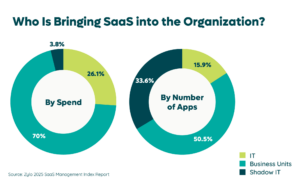
Today, our SaaS Management Index shows that individual employees and lines of business (LOBs) are the primary drivers of how SaaS enters an organization. Nowadays, IT teams control just 26% of SaaS spend.
This shift in purchasing power creates new challenges for Software Asset Management teams because it often bypasses traditional SAM oversight processes. Without governance, unmanaged SaaS quickly becomes problematic.
Top Risks of Unmanaged SaaS Include:
- Shadow IT: This occurs when individuals or departments acquire software independently from IT, bypassing traditional vetting for cost, compliance, and other criteria. It typically leads to a proliferation of off-the-books apps, with large organization now paying for an average of 660 applications.
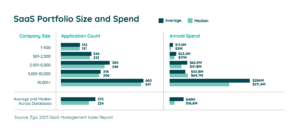
- Redundant Applications: Without centralized oversight, multiple teams and employees often purchase individual licenses for the same software. According to our data, organizations average 14 online training class tools, the top most redundant function in stacks today. Going the al-a-carte route also prevents IT and SAM teams from negotiating enterprise-level agreements for lower costs and additional features.
- Missed Renewals: The average enterprise experiences approximately two SaaS application renewals every business day. Without regular oversight and monitoring, expensive auto-renewals quickly pile up, often for unused software.
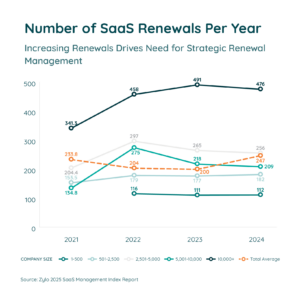
- Security Risks: Shadow IT leads to increased risk as applications unknown to IT security teams go unvetted for vulnerabilities that could cause data breaches or other issues. According to an IBM Cost of a Data Breach Report, the average data breach in the United States costs more than $4.45 million.
These risks—shadow IT, redundant applications, automatic renewals, and security breaches—drive up costs and waste valuable resources that could be better spent on solutions to help employees excel. Conversely, bringing SaaS Management into the SAM mix offers several benefits.
The No-BS SaaS Management Playbook
Learn MorePitfalls of Software Asset Management Tools for SaaS
Many organizations attempt to manage SaaS using legacy SAM tools—or spreadsheets. Neither approach offers the functionality to manage SaaS holistically, and they’re typically manual, cumbersome, and prone to errors.
Let’s examine the common pitfalls of Software Asset Management tools. They:
- Are built for on-premises software, not SaaS. While they attempt to incorporate SaaS, those functions serve as an add-on to the broader tool—rather than the primary focus. SAM tools were built for on-prem, so their core capabilities don’t apply to SaaS.
- Have insufficient discovery and spend management. Discovery with SAM tools is typically manual, point in time, and limited to installed software on devices, failing to capture unknown software. Although there have been attempts to adapt SAM to this purpose, it still misses a lot—especially with the dominance of cloud-based tools.
- Require extensive additional technical resources and implementation services to configure and run. Often, this is due to workflow capabilities and other functions not being user friendly.
- Do not include comprehensive renewal management. While some SAM tools provide simple renewal notification features, they often don’t offer a calendar, price benchmarks, dashboards, or milestone tracking as standard features.
- Lack deep usage integrations. Typically, SAM tools provide only basic usage integrations, which may not be sufficient for the nuanced needs of managing SaaS applications.
Why You Need a Dedicated SaaS Management Platform
Software Asset Management and IT leaders see the importance of managing SaaS but aren’t seeing measurable results. A gap between perception and reality is preventing them from driving an effective SaaS Management program.
With SaaS, audits really don’t exist. Vendors can always see what you’re using because it’s a cloud-based tool. But it’s not so easy for everyone in your organization to gain the same visibility. That shifts software management from audit defense to planning and optimization. SaaS requires you to answer questions like:
- Did we purchase enough units?
- Are we fully utilizing the licenses, or can I pull it back?
- Are we overusing certain licenses from a consumption standpoint?
70% of IT and SAM leaders think their current SaaS tracking methods are accurate. Yet 70% still use legacy tools or spreadsheets to track their SaaS apps. (2024 SaaS Management Index)
Though it may feel overwhelming for SAM pros to manage ALL apps, each requires a different approach. The bigger top-tier vendors still likely have more complexity, so they’ll need to be handled accordingly. Likewise, long-tail applications, often with lower spending, won’t need as heavy of a hands-on approach.
You might wonder why you should care about low-spend, long-tail apps. In isolation, managing low-spend licenses while rationalizing your stack doesn’t seem to have a significant impact. But in combination, those apps can have a significant financial effect.
SaaS Management is the holistic business practice of proactively managing, optimizing, and governing all the SaaS applications within a company’s portfolio. At Zylo, we think of it through the lens of inventory, license, and renewal management.
Complete, Always on Discovery
An SMP discovers all existing and new apps and spend, not just what you know about. Other tools are manual and don’t find shadow IT.
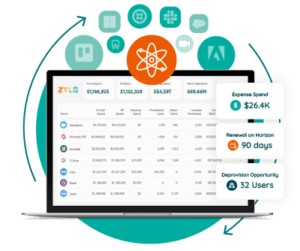 Take Zylo’s Inventory Management Solution, for instance. You can easily discover, categorize, and measure relevant metrics (like usage, contracts, and risk) on all the SaaS applications operating throughout your organization.
Take Zylo’s Inventory Management Solution, for instance. You can easily discover, categorize, and measure relevant metrics (like usage, contracts, and risk) on all the SaaS applications operating throughout your organization.
For example, one of Zylo’s large enterprise customers used the platform to discover 16X more SaaS applications in their enterprise than what their traditional SAM tool provider had found.
How the Zylo Discovery Engine Powers the Most Comprehensive SaaS Management Platform
Learn MoreAutomated System of Record
Having a comprehensive system of record is foundational to successful SaaS Management. It ensures you have all the right data to inform decision making — whether around licensing, security risks, app rationalization, among others.
Manually building a SaaS inventory can be cumbersome and time consuming if you’re using a SAM tool. Instead, a SaaS Management platform uses automation to simplify this process, creating economies of scale.
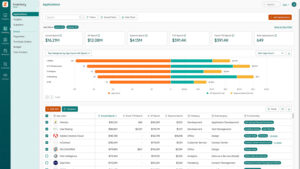
Enriched Data
An SMP enriches the data in your configuration management database (CMDB) by providing near real-time, normalized data on SaaS usage, ensuring it stays accurate and complete. It uncovers shadow IT, resolves anomalies, and highlights critical applications, enabling better prioritization and decision making. Additionally, it streamlines change management by keeping the CMDB updated with the latest configurations and usage patterns, making transitions smoother.
Cross-Functional Collaboration
Legacy tools are limited to the use of a specialized practitioner. For example, a SAM tool is only accessible by a SAM professional. In contrast, a SaaS Management platform is suited for all stakeholders—including IT, Procurement, and application owners. Collaboration improves when you’re all working from the same tool and have visibility into the bigger picture.
License Optimization
Some SAM tools are rather effective at license management. But using an SMP helps you scale this effort to a broader set of applications, such as beyond your top-tier applications.
A SaaS Management platform’s integrations provide user, license, and usage data with deeper insights to understand how your team actually uses software. That information enables you to analyze, identify, and act on opportunities to optimize licensing.
For instance, Zylo has multiple options for connecting your applications. Integrating into Zylo allows license utilization data to flow into a centralized place, via direct integration, API, or Usage Connect.
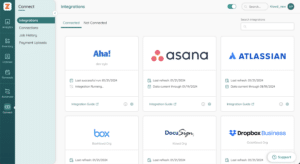
From there, the SMP automates license optimization at scale — deprovisioning unused licenses or downgrading where possible — with features like Zylo’s Workflows.
If you want to analyze your SaaS portfolio in conjunction with your on-premises software, you can use Zylo’s API connection to your Software Asset Management tools.
The IT Leader’s Guide to Software License Management
Learn MoreProactive Renewal Management
SAM tools were not built with renewals in mind, so they don’t typically feature functionality to manage them. An SMP like Zylo lets you run programmatic renewal management, helping you stay ahead of renewals by centralizing key data, providing visibility into and alerts for upcoming renewals, and offering benchmarking tools.
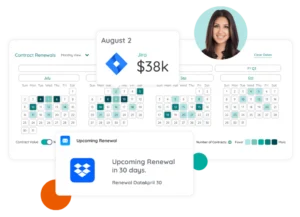
Don’t get surprised by renewal costs or let auto-renewals rob you of the chance to negotiate with the vendor. The right SMP will alert you well in advance of renewals and provide the data you need to make the best decision for the business.
Drive Holistic SaaS Management with Technology
Learn how Zylo optimizes SaaS Assessment Management in a central system of record.
- Lower costs with data-driven insights: Discover your complete SaaS inventory — even mischaracterized software — so you can identify and remove redundant or unused applications.
- Make key decisions on the fly: See real-time recommendations to drive savings and automate workflows to de-provision licenses.
- Manage chargebacks easily: Streamline SaaS software chargebacks between departments with key usage insights.
- Combine SaaS data with SAM: Pair usage and license data with your Software Asset Management tools to contextualize SaaS among on-premise assets.
SAM + SMP = Better Together
After reading this blog, you may be thinking: why not use a single solution for on-premises software and SaaS? Logically, it makes sense. But the reality is, such a solution does not exist. That’s because each of these organizational investments is unique and managed differently by most companies.
The real answer? You need both a SAM tool and a SaaS Management Platform to holistically manage all your software – both SaaS and on-premises. It’s not an either-or but a yes-and scenario.
In fact, 55% of Zylo’s customers use Flexera, ServiceNow, or Snow for their traditional on-premises software management and Zylo for their SaaS Management. Learn how enterprises like Adobe are creating a SAM tool and SMP “better together” story for their software management strategy.
Tour Zylo or request your personalized demo to see how it powers holistic SaaS Management for your organization.


